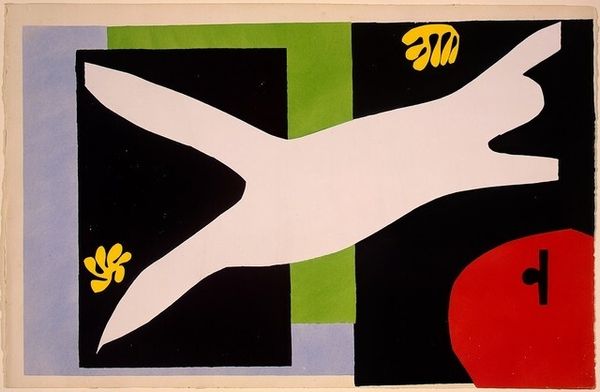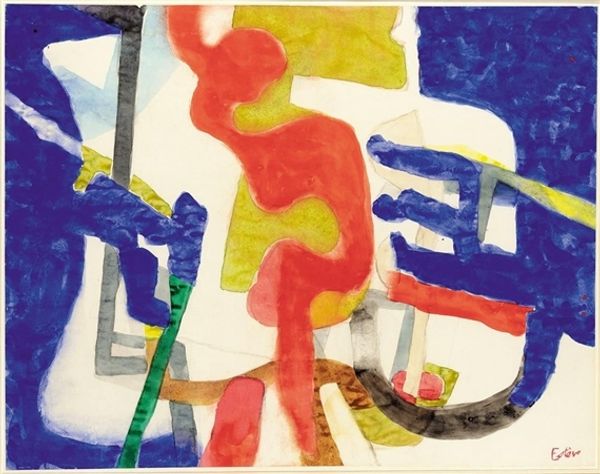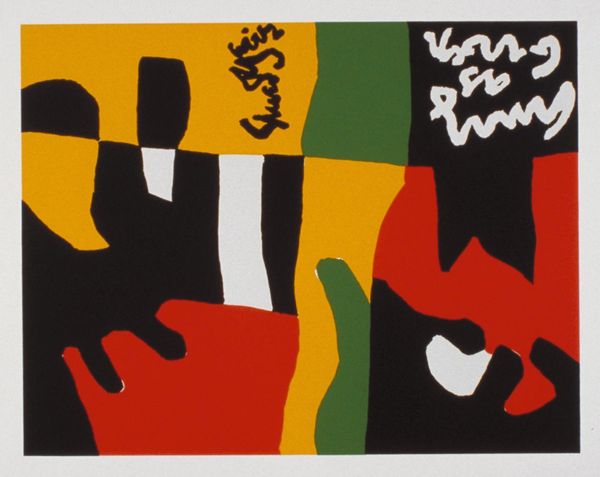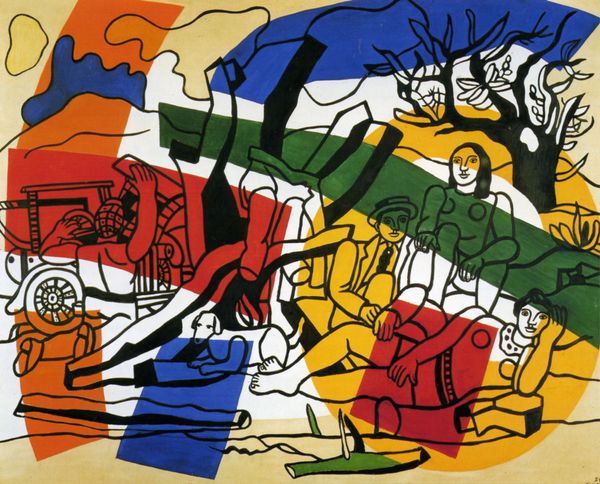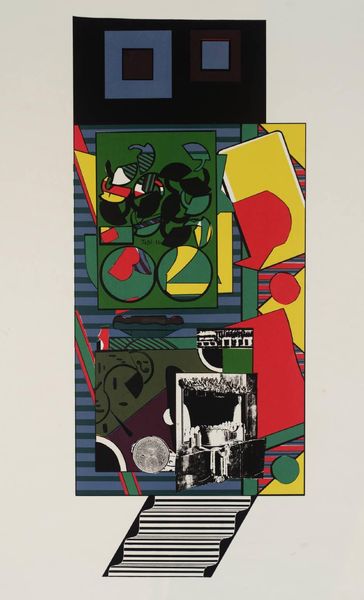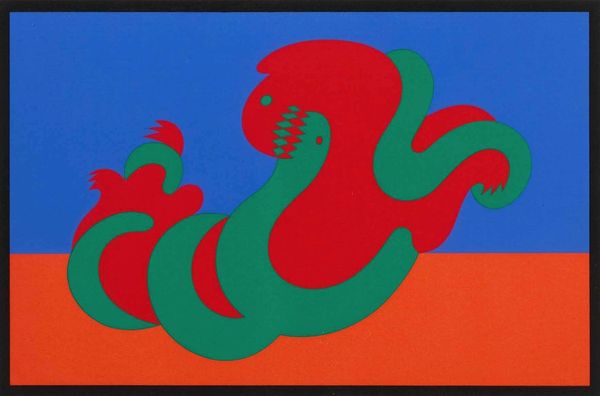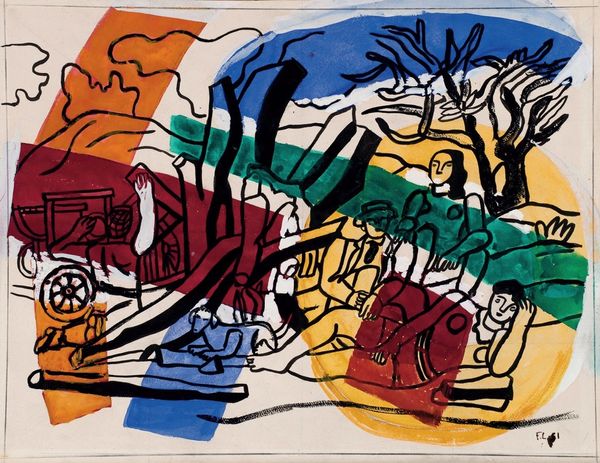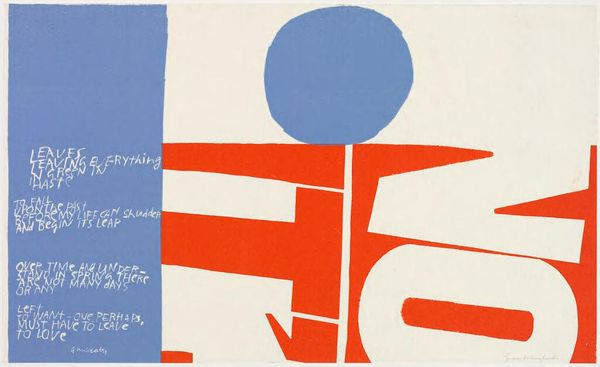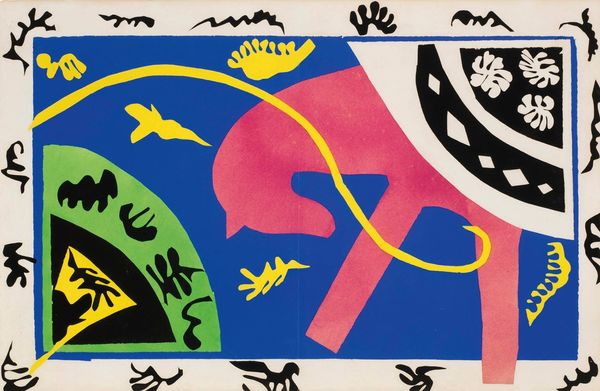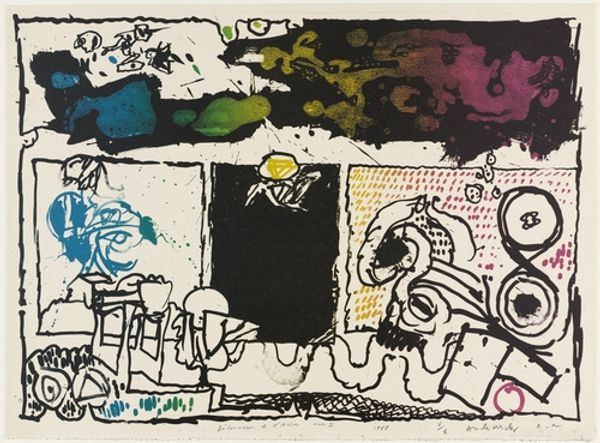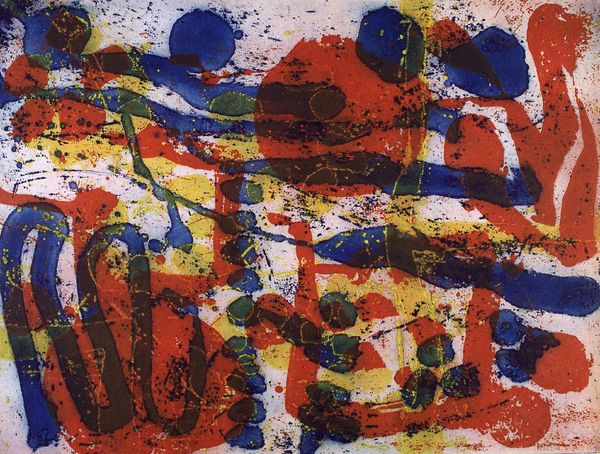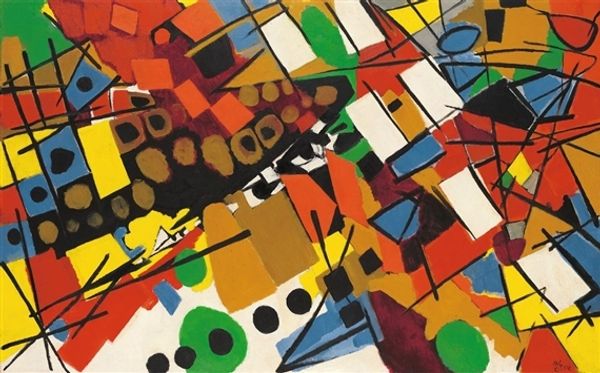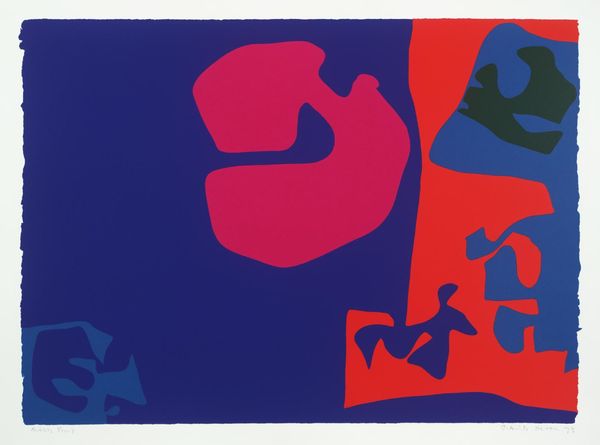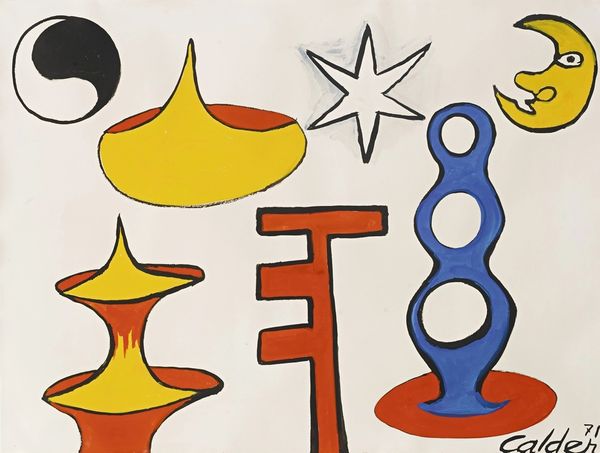
acrylic-paint, typography
#
pop art
#
acrylic-paint
#
text
#
typography
#
geometric
#
abstraction
#
pop-art
#
modernism
Copyright: Stuart Davis,Fair Use
Curator: Stuart Davis’ 1951 painting "Visa," currently at MoMA, feels immediately impactful—a canvas bursting with geometric forms and bold textual elements. What is your initial read? Editor: Brash. Chaotic. But I'm drawn to the layered symbols at play, all contained by this vibrant yellow border. The overlaid, fragmented words. There's almost a sensation of disorientation. Curator: It's definitely designed to disrupt. Davis, deeply influenced by his experience of New York City’s frenetic energy, creates a visual language that mirrors the overwhelming sensory experience of modern urban life. The term 'Visa' itself implies permission, a gateway, yet the image is deliberately fragmented and challenging. How does this interplay affect the work's meaning, do you think? Editor: To me, it evokes advertising, or some kind of promotion for ‘Champion’ but with something…else, as the work suggests. There’s a very knowing use of early-century advertisement and language, but the message isn't clear; I think that's the interesting part. The symbols compete with each other rather than forming any logical sequence. Curator: Absolutely. Davis had strong political commitments, particularly to leftist causes and labor rights. I would say that this work reads as a direct engagement with the culture of consumerism and the visual rhetoric that pervades public spaces in the post-war context. Note his disruption of expected visual narratives. Does that impact resonate? Editor: Definitely. I think the clashing colors heighten that sense of anxiety and that it is all the more important when one looks at the piece with a critical eye toward his broader politics. I’m also intrigued by that almost obscured handwriting that reads 'The Amazing Continues Itself'. Curator: It functions as a powerful commentary on the state of the world—almost implying that progress itself contains its own contradictions and challenges. It pushes us to question what exactly that "visa" is permitting us to enter. Editor: A fractured visual landscape, pregnant with possibilities—it remains a powerful visual challenge. I’ll carry that interpretation with me. Curator: For me, situating "Visa" within its socio-political moment truly elevates its impact, revealing a critique of power that continues to echo across the decades. Thank you for your thoughts!
Comments
No comments
Be the first to comment and join the conversation on the ultimate creative platform.
